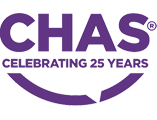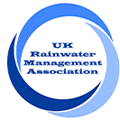Addressing the common misconceptions of rainwater harvesting
26/10/2023

26/10/2023
Rainwater harvesting is commonly embraced by many within the water and construction industries as a positive tool for reducing flood risk and tackling water scarcity. Despite many industry professionals looking favorably at rainwater harvesting, there are still many misconceptions and misinformation about rainwater harvesting in existence. These misconceptions stem from a lack of understanding of rainwater harvesting technologies and how they work within commercial and residential properties. This blog is designed to give the most up-to-date information on rainwater harvesting and highlight that rainwater is safe, clean, and sustainable.
Rainwater harvesting has developed significantly within the past two decades meaning systems are becoming even safer, more efficient, and more reliable than ever before. Before the myth-busting starts, we always advise working with a reputable rainwater harvesting manufacturer, like Stormsaver, who can size the system properly. A reputable supplier of rainwater harvesting will have been dealing with the technologies for many years and will know the best system for the proposed development and have the appropriate fail-safe features in-place for the end user.
When rainwater falls from the sky it is naturally clean and clear. When was the last time you saw dirty rainfall? Any debris that is in rainwater will be picked up from the surface of the roof area but there are filters in place within rainwater harvesting systems to prevent debris from reaching the points of use. Pre-tank filters remove leaves and other debris, additional UV filtration can be used to deactivate bacteria in microorganism form, and automatic backwash filters can remove smaller debris.
Any above-ground body of water is susceptible to developing legionella, not just rainwater harvesting; however, a good rainwater harvesting system will be designed to reduce the risk. For example, Stormsaver recommends all internal break tanks be located at a low level within the building as legionella has a higher chance of forming in higher temperatures. Stormsaver Rainwater Harvesting Systems also have a mains water top-up which opens automatically during the night to prevent a dead leg within the pipework. Additional UV filtration can be supplied with rainwater harvesting systems and installed on the outlet of the system to reduce risk further.
Whilst this may have been a risk three decades ago, legislation and system design have come a long way since then. Nowadays, we have different coloured MDPE pipework to identify reclaimed water supplies versus mains water supplies. Black and green MDPE pipework highlights reclaimed rainwater and blue MDPE pipework highlights potable water supplies. This prevents future contractors from cross-contaminating the water supplies unintentionally.
Reputable suppliers of rainwater harvesting systems will offer commissioning on new systems as standard. In fact, the Stormsaver System comes with protective measures so that the system will not function without being commissioned by a Stormsaver Engineer. Reputable suppliers will not sign off commissioning certificates if the pipework has been incorrectly installed or inadequately identified.
All rainwater harvesting systems with mains water top-up functionality will come with a physical air break to prevent cross-contamination between mains water and rainwater. This is in accordance with the British Standard, BS EN 16941.
As well as saving water, rainwater harvesting can also contribute towards reducing scope 3 emissions for organisations. Traditionally, scope 3 emissions have been the hardest type of emissions for organisations to reduce. Rainwater harvesting allows organisations more autonomy over their water supplies.
The Ricardo Report was the latest study into the carbon-saving potential of rainwater harvesting. The report concluded that rainwater harvesting was less carbon intensive than mains water. Findings highlighted that mains water required much more filtration and transportation than an on-site rainwater harvesting system. Operational factors, including maintenance of the rainwater harvesting system, were also factored into this research using data from live sites across the country. The report can be viewed here.
Rainwater harvesting systems that have been designed and installed correctly should require relatively little maintenance. In fact, rainwater harvesting systems only require two service visits per year and a tank clean every 2-years. Rainwater harvesting is just like any other electrical and mechanical system which requires maintenance due to having internal moving components.
Maintenance intensity can also be reduced by specifying automatic backwash filters on the rainwater harvesting system which do not require physical replacement when blinded with debris.
Whilst this may have been the case five years ago, new technologies have developed since then. Community rainwater harvesting systems remove the requirement of maintenance from the homeowner, prevent homeowners from switching systems off or modifying them, and can provide every home in the development with a sustainable water supply.
Developers can also reap the benefits of not having to install large swales and attenuation ponds as the community rainwater harvesting system can be linked with crate or tank attenuation storage. The combined system communicates with Met Office Weather Data to ensure there is always 100% attenuation capacity available for an incoming storm. Learn more here.
This is simply not true. Stormsaver maintain 1500 rainwater harvesting systems across the UK from a variety of manufacturers. These sites are successfully saving water and are being maintained and managed by specialist engineers.
Systems that have been de-commissioned prior to achieving their intended lifespan were either incorrectly installed in the first place, purchased from an inexperienced supplier, or had not been maintained regularly; therefore, had a high cost for remedial works to get the system saving water again. Stormsaver has designed systems to be easy to install and have a close working relationship with our installation contractors. Stormsaver are also providing installation services through our own team of installation engineers. Collectively, the approach aims to mitigate incorrect installation.
Stormsaver offers fully accredited, free-of-charge CPD sessions for consultants and organisations looking to investigate rainwater harvesting further. To book, get in touch here.

My role as a Water Reuse Specialist means I get to keep up to date with all things water conservation. My favourite water saving tip is to turn taps off when brushing your teeth! I think rainwater harvesting and the water reuse industry is exciting, and I love sharing updates with our customers. View Matt’s Stormsaver profile here.
Terms & Privacy Policy Cookie Policy Site Map
Copyright © 2024 Stormsaver Ltd. All Rights Reserved.





